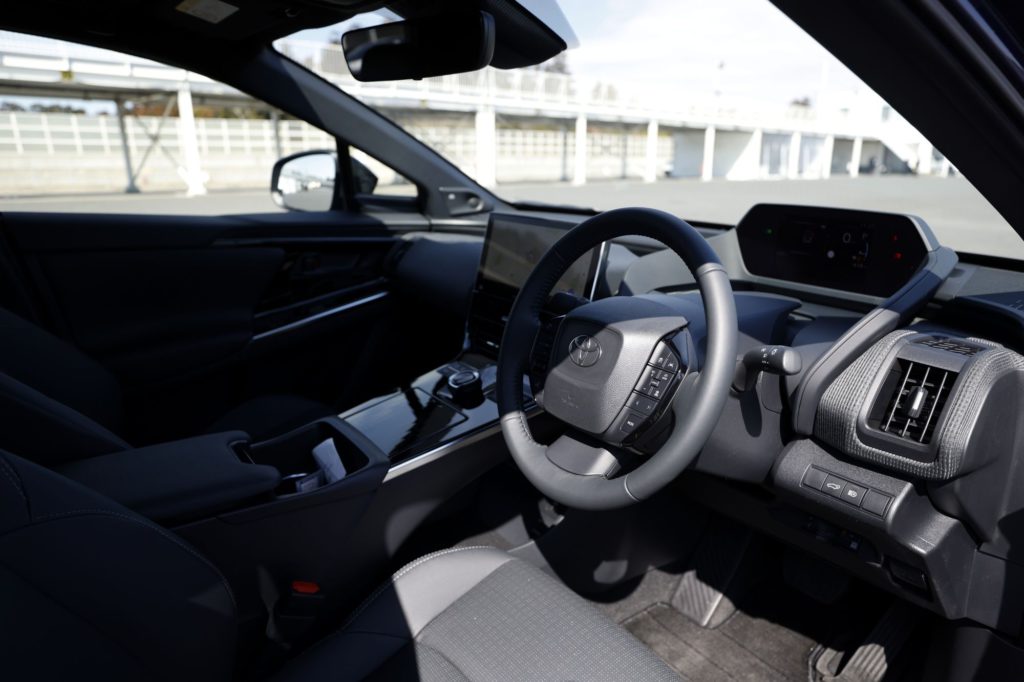(Bloomberg) —
A few weeks ago, I roused myself at 5 a.m. to catch a bus, two trains and then a taxi to a racetrack in the middle of a forest outside Tokyo.
The early start, long trip and jostling from my taxi driver’s suggested mountain-road shortcut was, however, worth it in the end.
Along with a handful of other reporters assembled at Sodegaura Forest Raceway, I got to test out for the first time a prototype of what is arguably the most important upcoming model from the world’s biggest automaker: Toyota’s bZ4X.
The bZ4X crossover is Toyota’s first major global, mass-produced electric vehicle. There’s a lot riding on it.
Toyota has been criticized by some for dragging its feet in the pivot away from gasoline engines, and being a late entry to the arena of mass market EVs. The bZ4X is the first of 30 EVs Toyota plans to launch globally by the end of the decade. When it debuts in major markets later this year, it will provide an early indication of how future Toyota electric models will size up against competitors.
At the racetrack, I spoke with Daisuke Ido, the Toyota official in charge of the development of the new EV. He talked about the bZ4X being the end product of more than two decades of experience Toyota has accumulated building battery-powered cars, mostly in the form of hybrids.
Ido said that personally, he never thought Toyota’s stance on EVs was backward. Work been going on behind the scenes for years that the company is only just now able to show off. Ido points specifically to the bZ4X’s battery as exemplifying that preparation.
Toyota has said the model will offer around 250 miles of range per charge in the U.S. That’s short of Tesla’s Model Y crossover, which offers an estimated 318 miles of range, though the bZ4X is also going to sell for a much lower price.
What will really stand out will be the battery’s durability, according to Ido. Twenty years of tinkering with temperature-management systems and materials has enabled Toyota to target a 90% capacity-retention rate for the bZ4X’s battery after 10 years of use. Battery deterioration is a big sticking point for consumers with range anxiety or those hoping to eventually be able to resell their EVs for a decent price.
As someone who grew up commandeering their parents’ RAV4 crossover, it was an interesting experience taking its sleek electric lookalike for a spin around the track. The bZ4X is roomy on the inside, but you don’t feel its weight at all. It’s quick to accelerate (as you’d expect from an EV) and shockingly quiet thanks to soundproofing glass and its lack of an engine.
Inside, the bZ4X feels simple but high-tech, with a big central display and another panel mounted behind the steering wheel. It’s equipped with Toyota’s latest driver-assistance technology and is capable of over-the-air updates. Some models even come with rooftop solar panels that help charge the car when it’s parked outside.
Toyota has built its brand over decade by offering affordable, reliable, quality vehicles backed by large-scale manufacturing. We’ll now get to see how well that recipe fares in the age of the electric car.
More stories like this are available on bloomberg.com
©2022 Bloomberg L.P.











